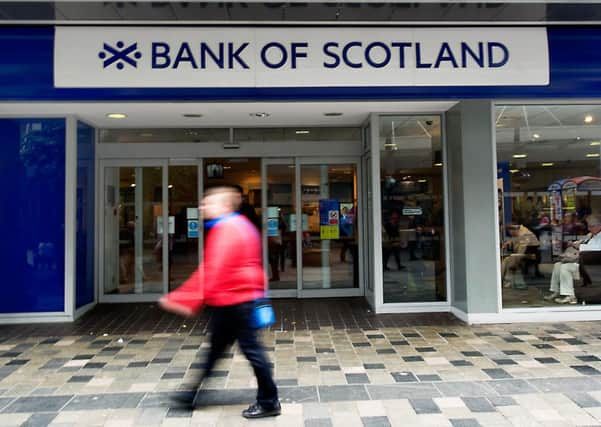Lloyds hails '˜robust' performance despite fall in profits


The lender said that, excluding the TSB business, which it sold last year, profits were “stable” on a year earlier.
Lloyds, owner of the Bank of Scotland and Halifax brands, has escaped the hefty profits hit suffered by its investment banking rivals, with Barclays yesterday unveiling a 25 per cent slide in first-quarter profits to £793 million as it was hit by tough trading in its investment banking arm.
Advertisement
Hide AdAdvertisement
Hide AdBarclays revealed that underlying profits in its corporate and investment banking business dropped 31 per cent but said its core business under new chief executive Jes Staley proved resilient, with profits up 18 per cent to £1.6bn, although this was dragged down by less well performing parts of the business.
Staley said that moves to shed unprofitable activities would cut the bank’s cost-base but was having “a direct impact on our profitability today and mask the true performance of our strong core business”.
On a bottom-line basis, pre-tax profits at Lloyds dropped 46 per cent to £654 million, but this included a £790m charge from buying back high-interest bonds – also called enhanced capital notes (ECNs) – from investors.
Chief executive Antonio Horta-Osorio said the results show the group’s ability to “actively respond to the challenging operating environment”.
He told The Scotsman that the challenger bank phenomenon in the UK was now firmly established.
“Competition has increased, with the highest number of banks opening in the last 30 years,” he said.
“The number of banks that have opened shows the attractiveness of the UK retail banking market and the dynamism of the market.”
Total loans and advances to customers were £457bn at the end of March, an increase of £2bn since the final quarter of 2015. Customer deposits were £1bn higher at £419bn.
Advertisement
Hide AdAdvertisement
Hide AdThe group said it took no further charges for the payment protection insurance (PPI) mis-selling scandal. It saw statutory pre-tax profits fall 7 per cent to £1.64bn in 2015 after taking a £2.1bn PPI hit.
But the group said in its latest update that PPI claims had been “broadly” in line with its expectations so far in 2016, at around 8,500 a week.
Chief financial officer George Culmer said there been “no pressure” from regulators on the need to build up the group’s balance sheet in the face of a possible Brexit vote on 23 June.
He also said that there had been no discussions with UK Financial Investments on the timing of the possible sale of further Lloyds shares into the market. The UK government recently delayed a retail offer of part of its remaining 9 per cent stake because of volatility in banking shares.
Culmer said: “What they choose to do is down to themselves. They will make their own plans and we will respond to what they decide. It’s up to them.”
He acknowledged that the extended climate of low interest rates was affecting returns, but insisted Lloyds still offered “competitive rates” to savers.
Lloyds gave no further guidance on future dividend policy, other than to say there would be more clarity at the half-year mark and later in the year.
Horta-Osorio said there had been a “surge in demand” for buy-to-let properties ahead of the increase in stamp duty south of the Border.
Advertisement
Hide AdAdvertisement
Hide AdRival Santander yesterday said the buy-to-let rush ahead of this month’s stamp duty increase helped profits rise 13 per cent as it enjoyed a surge in mortgage lending.
The Spanish-owned lender said UK pre-tax profits increased to £532m in the first three months of 2016, up from £470m a year earlier, as total lending grew by £7.1bn.
But the group warned that lending will not rise at the same pace after the UK government’s stamp duty increase on buy-to-let properties came into effect on 1 April, with the industry set to face “challenges”.
